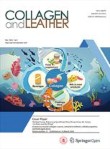A review on marine collagen: sources, extraction methods, colloids properties, and food applications
Interest in value-added industrial by-products surged in the past decade, driving research into various collagen sources and extraction methods. While bovine hide, cattle bones, pork, and pig skins remain the most abundant collagen sources, there is a growing trend in the industrial utilization of collagen from non-mammalian species. This review explores marine collagen, as well as its extraction techniques and applications in food industry. Collagens extracted from fish, jellyfish, and sea cucumbers have considerable yield and mostly comprised type-I collagen. Ultrasound-assisted extraction methods show promise in enhancing yields and strengthen the triple-stranded helical structure. Marine collagen is used as biodegradable film-forming materials, colloid stabilizers, foaming and micro-encapsulating agents, enhancing the stability, consistency and elasticity in the food products.
Ultra-low reflection electromagnetic interference shielding nanofiber film with effective solar harvesting and self-cleaning
Developing low-reflection electromagnetic interference shielding materials can effectively decrease the secondary radiation pollution of electromagnetic waves. Herein, by using waste leather scraps and ZIF-8 as raw materials, a low-reflection electromagnetic interference shielding nanofiber film with ZnO coated on carbon fiber (CNF), was fabricated by electrospinning and carbonization methods. ZnO endows the nanofiber film low reflection property through optimizing impedance matching between free space and the nanofiber film. The nanofiber film possesses high electromagnetic interference shielding efficiency, which is beneficial to the excellent electrical conductivity of CNF. What’s more, the nanofiber film involves abundant interface, ultra-low reflectivity, excellent solar harvesting and self-cleaning performances.
